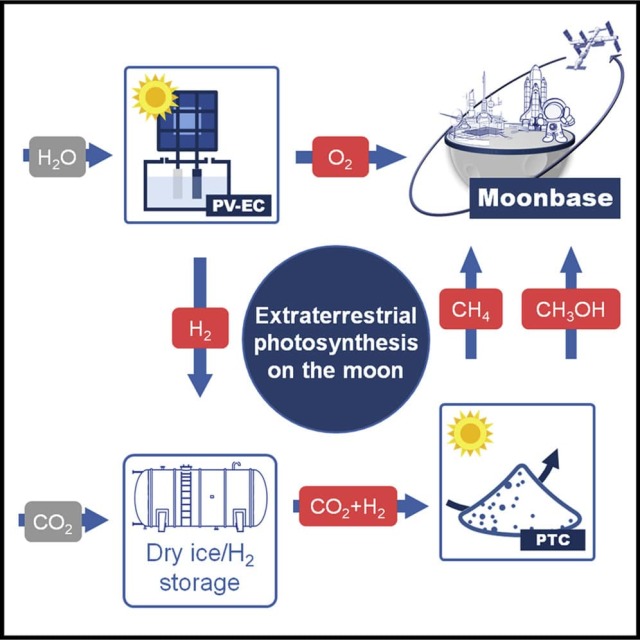Chinese researchers have discovered chemicals in lunar soil samples that can be used as catalysts for the production of hydrocarbons and oxygen. Potentially, the discovery will allow us to develop a technological process that provides future colonists with the main resources for living on the Moon. And also fuel for the return trip.
Half a century ago, humanity carried out one of the greatest "flags" in its history — people visited another celestial body. And although the Apollo program had huge scientific results, it is difficult to argue that in the first place it was a project implemented for the sake of winning the "Lunar Race". Future missions to the Earth's natural satellite aim to prepare for the long-term stay of people on it. And this will require technologies that allow the use of resources on the spot.
On the moon, the two most common resources are sunlight and regolith. There is also enough water in the form of ice, and not only in the forever shadowed craters of the circumpolar regions, but also in the bowels . It is a great idea not to carry fuel on the way back and oxygen, which is so necessary for people to live, is a great idea. Thus, a logical question arises: how to ensure their production on the spot, so that valuable kilograms of payload are spent on food and scientific instruments?
Water decomposes into oxygen and hydrogen by electrolysis, which requires an influx of energy. It is easy to get it from sunlight. And methane is quite suitable as fuel. Moreover, there are several well-mastered reactions at once that allow it to be produced from hydrogen and carbon dioxide. In a new scientific paper, Chinese researchers propose a closed cycle that combines together the two processes described above. They call it "extraterrestrial photosynthesis." A detailed description of the experimental technology is published in the journal Joule.
The key components of "extraterrestrial photosynthesis" are iron— and titanium-rich compounds discovered by scientists in the lunar regolith. His samples were delivered to Earth by the Chang'e-5 spacecraft in 2020. The researchers conducted a series of experiments showing that these compounds show themselves as effective catalysts for the electrolysis of water, as well as the photothermal conversion of carbon dioxide into methane and methanol.

The general scheme of "extraterrestrial photosynthesis" on the Moon. Where on the lunar base will the Space Shuttle come from in a full launch configuration with side boosters and an external tank is an open question
Image source: https://doi.org/10.1016/j.joule.2022.04.011
In general terms, the scheme of the entire cycle looks like this. First, the water obtained locally or brought with them is decomposed into hydrogen and oxygen. The first is sent further along the technological process, and the second is stored as an oxidizer for flying home and enriching the air at the lunar base. The next stage involves photothermal conversion of carbon dioxide and previously obtained hydrogen into methanol and methane. Sources of CO2 can be both the atmosphere of residential modules and dry ice (presumably, there is also a lot of it on the Moon).
Simply put, ideally, future builders of the lunar base will need to bring with them only a reserve supply of air and water, as well as all the necessary equipment. And people will be able to get the main energy carriers and vital resources from local deposits. Moreover, even consumables — catalysts, you do not need to take with you. Chinese scientists plan to test the technology they have created in one of the next unmanned missions to the Moon.

